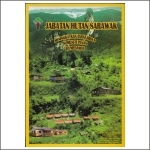 Athi Shankar
Athi Shankar
Sahabat Alam Malaysia wants the Sarawak Government to heed Baram’s protesting natives.
Sahabat Alam Malaysia (SAM) wants the proposed Baram hydroelectric project stopped.
SAM president SM Mohamed Idris urged the state government to listen to the demands of protesting natives.
He said Batang Ai, Bakun, Murum and other dam-affected communities around the world had described and relived the perils of forced relocation on human well-being.
He said the Baram communities’ objections against the acquisition of their ancestral land was firmly rooted in law governing native customary rights, which were proprietary rights protected under Article 13 of the Federal Constitution and recognised by the court.
“Sarawak government should heed to calls of natives affected by the Baram Dam as expressed through the People’s Declaration against the Baram Hydroelectric Project 201.
“The opposition of affected communities should be enough to have the Baram Dam permanently cancelled,” said Idris in a statement here today.
Located at 200km from Miri between Long Naah and Long Kesseh, the proposed 1,200mw Baram Dam project would forcibly displace some 20,000 natives of Kayan, Kenyah and Penan communities from 26 villages.
Idris revealed that affected communities have been mounting blockades against heavy machinery for construction works since Oct 23, 2013.
According to the Energy Commission in 2012, the installed generation capacity of Sarawak Energy Berhad (SEB) stood at 1,352mw, while its maximum demand is 1,229mw, producing an energy reserve margin of 10%.
However, Idris noted that the Bakun Dam, categorised as an independent power producer (IPP), generated an additional 1,200mw in 2012.
On Oct 11, 2013, he said SEB reportedly disclosed that power demand from the Sarawak Corridor of Renewable Energy (Score) had exceeded the 1,800mw supply capacity of Bakun.
However, he said only six of Bakun’s eight turbines were in operation in 2013, generating only 1,200mw.
What’s wrong with Bakun?
He disclosed that seven power purchase agreements (PPA) had been signed by then involving combined 1,920mw electricity supply.
He said the five PPAs involved aluminium and manganese smelting plants, while two more were signed with a silicon plant and PERSERO, an Indonesian power utility.
He said additional energy for new Score-related PPAs was to be supplied by the Murum Dam. Murum dam is set to generate between 250mw and 500mw by December.
Thus, Idris said it was pointless to develop 11 more hydroelectric projects, including Baram, in Sarawak.
He called for Bakun to be fully operational.
He said each of Bakun’s eight turbines had a maximum energy generation capacity of 300mw.
Idris questioned Bakun’s low output as at Oct 2013 when it only 1,200mw of power.
He also said the public care right to be concerned about the impact of massive developments such as hydroelectric dams and their accompanying energy-intensive industries on the environment, human health and country’s finances.
“If supply exceeded the limits of need, who shall have the upper hand in such a situation – the supplier or the buyer?
“Energy-intensive and dam industries may gain immensely from Score, but can the same be predicted for local communities and the public?” asked Idris.
The 10th Malaysia Plan (10MP) between 2011 and 2015 reported that in 2009, electricity coverage of rural Sarawak stood at only 67%. With the proposed supply of power to 76,000 households under 10MP, coverage is expected to jump to 99% by 2015.
Idris said it was certain that despite the projections, numerous indigenous villages in rural Baram would still be without electricity in mid-2014.
“For all these reasons, we urge the Sarawak government to call off the proposed Baram Dam,” said Idris.






















Leave a comment